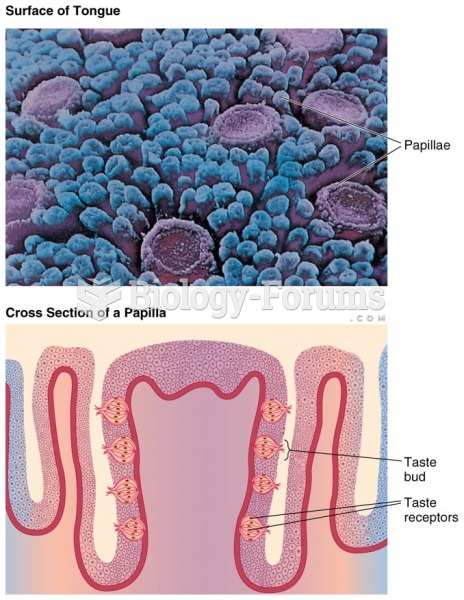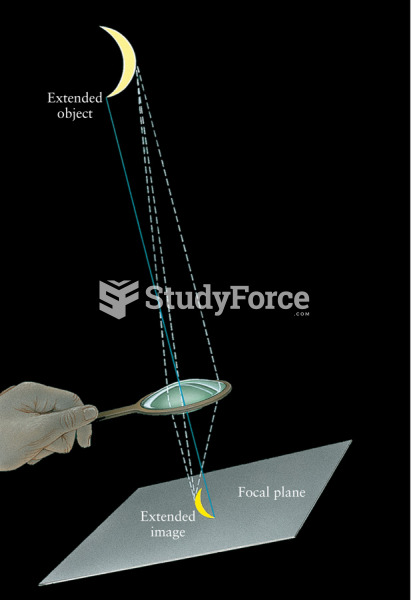|
|
|
Parkinson's disease is both chronic and progressive. This means that it persists over a long period of time and that its symptoms grow worse over time.
According to the American College of Allergy, Asthma & Immunology, more than 50 million Americans have some kind of food allergy. Food allergies affect between 4 and 6% of children, and 4% of adults, according to the CDC. The most common food allergies include shellfish, peanuts, walnuts, fish, eggs, milk, and soy.
Addicts to opiates often avoid treatment because they are afraid of withdrawal. Though unpleasant, with proper management, withdrawal is rarely fatal and passes relatively quickly.
There are over 65,000 known species of protozoa. About 10,000 species are parasitic.
When intravenous medications are involved in adverse drug events, their harmful effects may occur more rapidly, and be more severe than errors with oral medications. This is due to the direct administration into the bloodstream.
 Taste receptors, taste buds, and papillae on the surface of the tongue. Two sizes of papillae are ...
Taste receptors, taste buds, and papillae on the surface of the tongue. Two sizes of papillae are ...
 Alternative pathway recognition and activation. C3w is on the surface of the microbe; factor B binds ...
Alternative pathway recognition and activation. C3w is on the surface of the microbe; factor B binds ...





